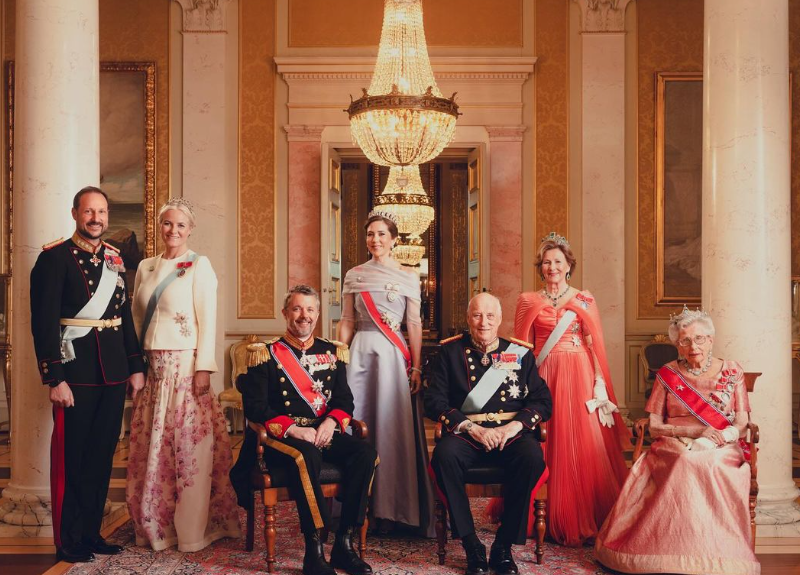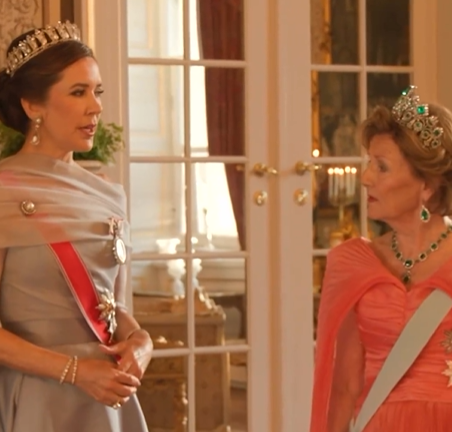
It’s one of the most famous tiaras in Europe and it’s about to mark a very big birthday. In just a few months time, the Pearl Poire Tiara has been a glittering symbol of royalty.
For over half a century, it was synonymous with one of the most famous and celebrated of modern monarchs, Denmark’s Margrethe II, who made it the symbol of her queenship. Margrethe wore it for her first official portraits as monarch and used it regularly throughout her 52 year reign.

(Photo by Kimm Saatvedt /Det kongelige hoff)
Now, following Margrethe’s abdication, it has passed to Denmark’s first queen consort of the 21st century and Mary wore it on an important anniversary. The State Banquet was held on May 14th 2024, the twentieth anniversary of her marriage to the now King of Denmark, Frederik X.
The diamond and pearl tiara is almost exactly 200 years old. It was made in 1825 for Princess Louise of Prussia at a time when royal brides were showered with jewels to make sure they looked suitably opulent following their regal marriages. Louise took it with her when she said ‘I do’ to Prince Frederik of the Netherlands.
The diadem eventually passed to Louise and Frederick’s daughter, another Louise, who became Queen of Sweden through her marriage to King Charles XV. And this second Louise is the reason the diadem ended up in Denmark. She and Charles had a daughter and called her, wait for it, Louisa.

This third princess was barred by Swedish law from inheriting her father’s throne and so did what many a royal woman in the 19th century did – married into another dynasty. Her husband would become King Frederik VIII of Denmark in 1906 and at that point, this pretty tiara became the diadem of a queen.
Queen Louise of Denmark collected a rather impressive set of pearl and diamond jewellery to match up with her family tiara and create a parure. And she left the whole lot to the Danish Royal Property Trust which means it can’t be shared out, it has to stay together and in the possession of the royal family.
It isn’t part of Denmark’s crown jewels but that hasn’t stopped it becoming a rather majestic set of gems. Since the time of Queen Louisa, the Pearl Poire tiara has become symbolic of the throne of Denmark.

Usually worn by queens, it has been loaned out twice to women without the title of Majesty but for important events where they have represented the Danish monarchy. In 1937 and 1953, the princesses sent to London for the coronations of King George VI and then Queen Elizabeth II wore the Pearl Poire to ensure they looked as regal as possible at these important events.
The tiara itself is made of diamonds with eighteen pearl pendants suspended around it. They are shaped as pears, hence the name ‘poire’.
Queen Margrethe loved the tiara and wore it for some of the most important moments of her historic reign. She was last seen in it on January 1st 2024, the day after she announced her abdication and just two weeks before she passed the throne to her elder son, now King Frederik X.
Queen Mary wore it for the first time at the Norwegian State Banquet, adding another chapter to the very royal history of this sparkling tiara.

